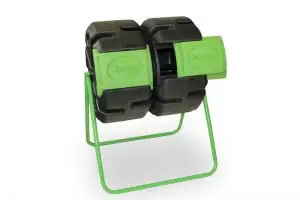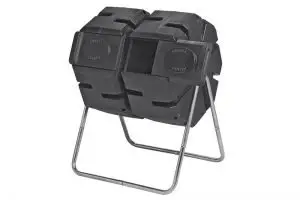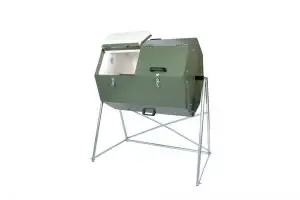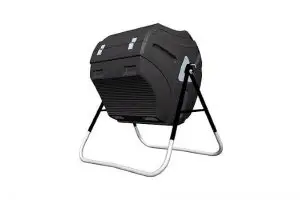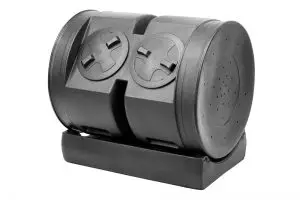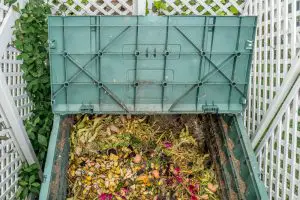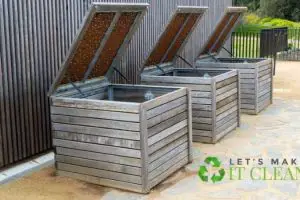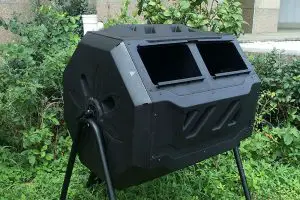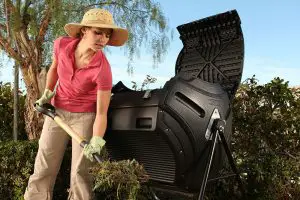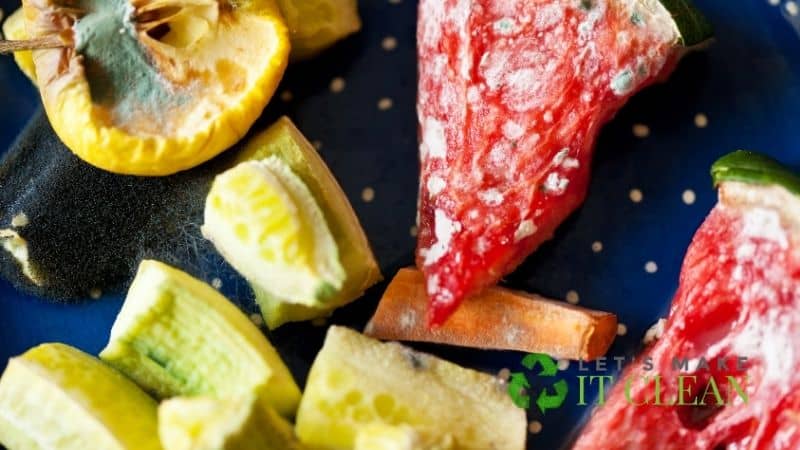Are you wondering if a tumbler is usable for composting during the winter months? With the warmer months gone, composting proves quite challenging.
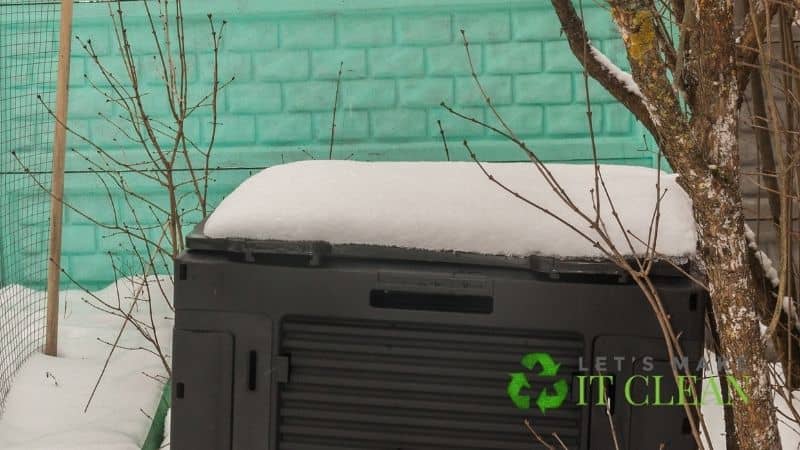
This doesn’t mean you should leave your compost to go dormant during the cold season. Year-round composting offers many advantages. By composting during the cold season, you’ll have ample manure for your garden come spring.
Quick Navigation
- The Key Winter Composting Tips
- What Should You Compost?
- Balance Green and Brown Matter
- Material Ratios
- Piling Up Before Winter
- The Temperature of the Compost Pile
- Avoid Excessive Moisture
- Occasional Watering
- Avoid Turning Your Compost Often
- Insulate Your Compost
- Lasagna Gardening/Lasagna Method/Sheet Composting
- Observe Extra Care During Spring
- Vermicomposting/Worm Composting in Winter
- Final Thoughts
One of the best ways of composting during the winter months is using a compost tumbler. Compost tumblers use a closed-composting system, which makes year-round operation a breeze.
They allow spinning at any time for efficient decaying. A compost tumbler also prevents animals and pests from messing with your compost. Moreover, some models offer compost in two weeks!
The Key Winter Composting Tips
Deciding on the ideal compost tumbler isn’t enough. There are a few things that’ll make sure your compost heap remains highly nutritious.
What Should You Compost?
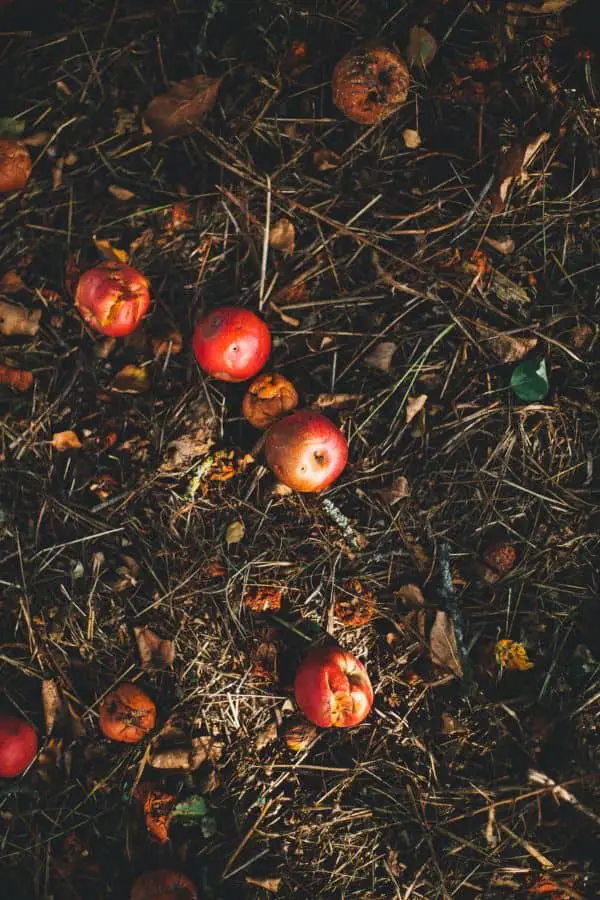
It’s crucial to keep reminding yourself what’s suitable for your compost tumbler and what isn’t. Most of the items you usually toss in your composting bin are usable all year round.
Some of the top nutritious materials for your composting bin include:
- Shredded leaves and other plant debris
- Grass clips
- Eggshells
- Tea-bags
- Vegetable scraps
- Coffee grounds
- Coffee filters
- Fruit rinds and peels
Some people may tell you it’s alright to toss papers in your compost bin. Nonetheless, these aren’t the best materials for your garden. They undergo chemical treatment to whiten them. Besides, they contain inks that have chemicals in them.
Winter temperatures being lower also slow down the decomposing process. Whatever you introduce in your compost bin should thus be small-sized. Shred your leaves and chop your food scraps.
Balance Green and Brown Matter
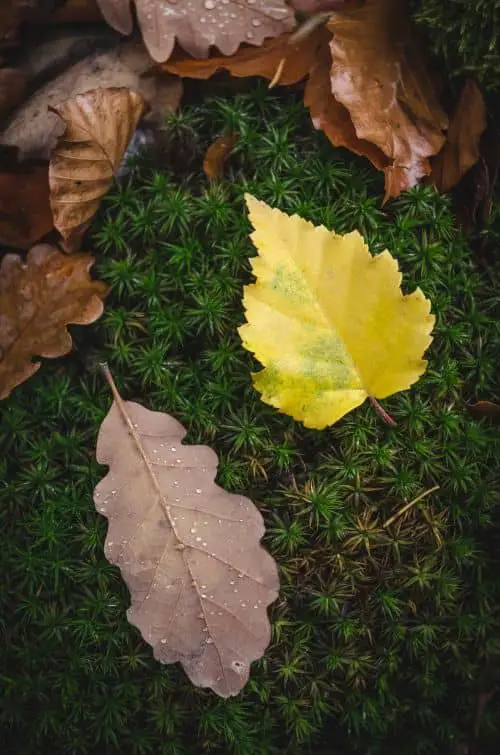
This is a crucial consideration, irrespective of the season. Green substances offer nitrogen, while brown materials are rich in carbon.
Nitrogen-rich materials are effortlessly accessible from your kitchen scraps. Unlike green matter, carbon-rich matter is challenging to find during the winter months.
The largest source of carbon-rich materials is yard waste. Good examples include dried leaves, twigs, and straw. These are usually under snow layers in winter.
You need a bit more brown substances during the cold season for proper balance.
An excellent idea is collecting dried leaves during fall. A winter compost bin requires brown matter for proper decomposition and activation.
Trash bags are perfect for the collection of dried leaves.
Material Ratios
The right ratios are essential for efficient decomposition. A 3:1 ratio offers microorganisms the ideal carbon amounts. Also, it ensures an excellent acidity level.
Make sure you add vast quantities of kitchen scraps to a winter pile. Collect your kitchen waste in one bucket and add them at once to your composter.
Piling Up Before Winter
Before the cold season begins, harvest all the finished compost inside your tumbler. This provides room for new substances to get combined inside it during the winter season.
Begin loading the materials into your composter with a strip of brown matter. Add the new compost mix, and then introduce another strip of brown matter. Layering maintains the warmth of the active compost.
Having a pile close to your back door is convenient when adding kitchen leftovers. A decent pile before the onset of the cold season is crucial for winter composting. Your pile should have begun decomposition before temperatures get too cold.
If possible, ensure your piles are about three or four feet tall on either side. This way, your compost piles keep adequate heat to ease better decomposition.
Bulking up your compost pile while allowing adequate airflow is ideal. It’ll flatten over time as it decomposes.
The Temperature of the Compost Pile
Maintaining a steady temperature for a perfect composting process is challenging in winter. The ideal temperature for decomposition ranges between 90-140oF. Below this level, the decomposition rate in a composter is slow.
Determine your compost pile’s temperature. If it’s below the ideal level, you should raise it. Some ways to bring up your pile’s temperature include:
- Addition of more nitrogen-rich substances
- Turning of the pile’s contents
You might not be able to keep your whole pile warm. Nonetheless, ensure the middle maintains this heat.
Avoid Excessive Moisture
Does your area receive much rain and snow during the cold months? Moisture control is vital towards successful winter composting. While snow may not present many problems with a compost tumbler, rainwater may penetrate it. Too much water slows the composting process.
Microbes have more activity when they are in warm environments. To prevent a slowing of the composting process, insulate your tumbler. Place it in areas reachable by the sun, even if rarely.
To maintain warmth, add ingredients that enhance insulation. Some excellent insulators include dried straw and leaves.
A tumbler makes the composting process stress-free. Its base offers support. Thus, it allows you to spin it effortlessly to mix the compost pile components. They have an aeration system for enhanced airflow through the;
- Vent holes
- Punctured tubes
- Spikes
A tight door seal keeps your compost pile securely inside while the tumbler rotates. Dark-colored tumblers help maintain heat inside. Bacteria stay alive by the continual ingredient addition.
Notably, a compost tumbler is rodent-resistant and animal-resistant too. Containing your compost ensures neatness and odor reduction.
Some types of tumblers have two sections. These permit active composting in one while the other compost pile develops.
Occasional Watering
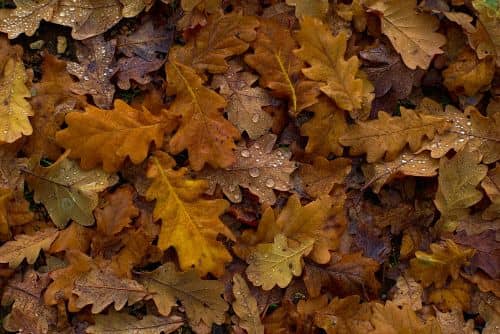
Minimizing moisture content doesn’t mean you don’t use any. Low humidity and winter winds might dry moisture, especially in an open pile. Adding water sparingly while introducing new material to the compost stack is crucial.
You should also turn the compost while doing this for uniformity. With a compost tumbler, you’ll preserve moisture better. Hence it’s one of the best methods to improve the composting process during winter.
Avoid Turning Your Compost Often
Unlike summer composting, you shouldn’t overhaul your pile often. Turning a winter composting system occasionally aids in warmth regeneration. Frequent turning leads to heat loss. Trapping heat at the center of your compost is essential.
Insulate Your Compost
A composter with ample insulation is vital during winter. Microbes ought to stay alive irrespective of the season thus need adequate warmth.
Here are ways for compost insulation to maintain the ideal warmth for decomposition;
- Choose a spot that receives ample sunlight to place your compost bin. Snow cover further enhances compost insulation.
- Use layers of leaves, straw, sawdust, or cardboard to cover your compost.
- Use a tarp to contain your pile. Place shredded leaves outside it.
- Use a pile of bricks or walls on three sides. Leave the Southern side open as it allows sunlight to shine on your stack.
- Use a waterproof insulation cover to wrap around your compost bins. Such covers are readily available at local stores and online such as the Amazon website.
Lasagna Gardening/Lasagna Method/Sheet Composting
If you’ll add garden beds, select your compost’s location during fall. Starting with Lasagna gardening offers you better yields. This method improves your soil quality right in your garden. Besides, it offers a straightforward way of composting during the cold season.
Here is how to conduct sheet composting:
- Place brown materials on the ground where you’ll have your compost pile. Dry leaves, sawdust, and straw are perfect for this layer.
- Upon the ground freezing, start adding kitchen scraps over the layer of brown matter.
- You may cover with a tarpaulin or big cardboard pieces to preserve the warmth.
Observe Extra Care During Spring
The start of spring is tricky since high rainfall is typical during this phase. As seen before, high moisture is detrimental to your pile’s proper decomposition. Plus, the excessive moisture makes it more stinky and slimy.
So, how do you prevent these effects if this happens?
Adding brown materials helps reduce the stench, sliminess, and slowed decomposition process. Add any remaining fall leaves, straw, or twigs from your fall collection, or use sawdust. Drain holes also help to get the right humidity level.
Vermicomposting/Worm Composting in Winter
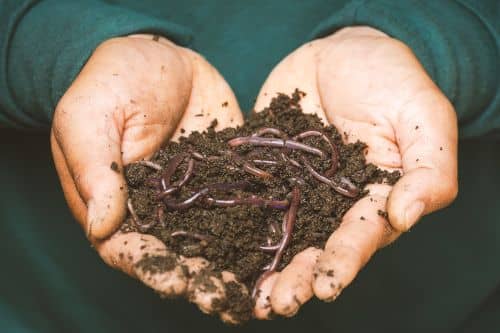
If winter composting is a hassle for you, vermicomposting is an excellent alternative. Some people can’t stand to look at worms. Still, they are perfect in the breakdown of food waste into nutrient-dense humus.
You may decide on placing your worm composting tumbler indoors during cold seasons. Should outdoor temperatures be over 40oF, you may place it outdoors.
Vermicomposting in a compost tumbler is a bit challenging. A tumbler tends to have a lot of warmth. The heat produced might be unbearable for worms. So, be extra cautious when vermicomposting in a tumbler. The good thing is that it makes them an ideal heat source for secondary heating in greenhouses.
Final Thoughts
It’s unnecessary to leave your compost pile to go dormant during winter. Some areas have long winters; hence your winter composting collection is quite sizable. Would you want to waste your food scraps when they can help you with gardening after winter?
Compost tumblers are the best for winter decomposition. They offer your heap with insulation and are water and snowproof. Besides, turning your compost is effortless. The lid allows you to roll your tumbler for stirring.
You can have tumblers indoors without leaving a mess. With the right care, tumblers are odor-free, thus excellent for city dwellers.
Do you want more composting tips? Bookmark our gardening website!

